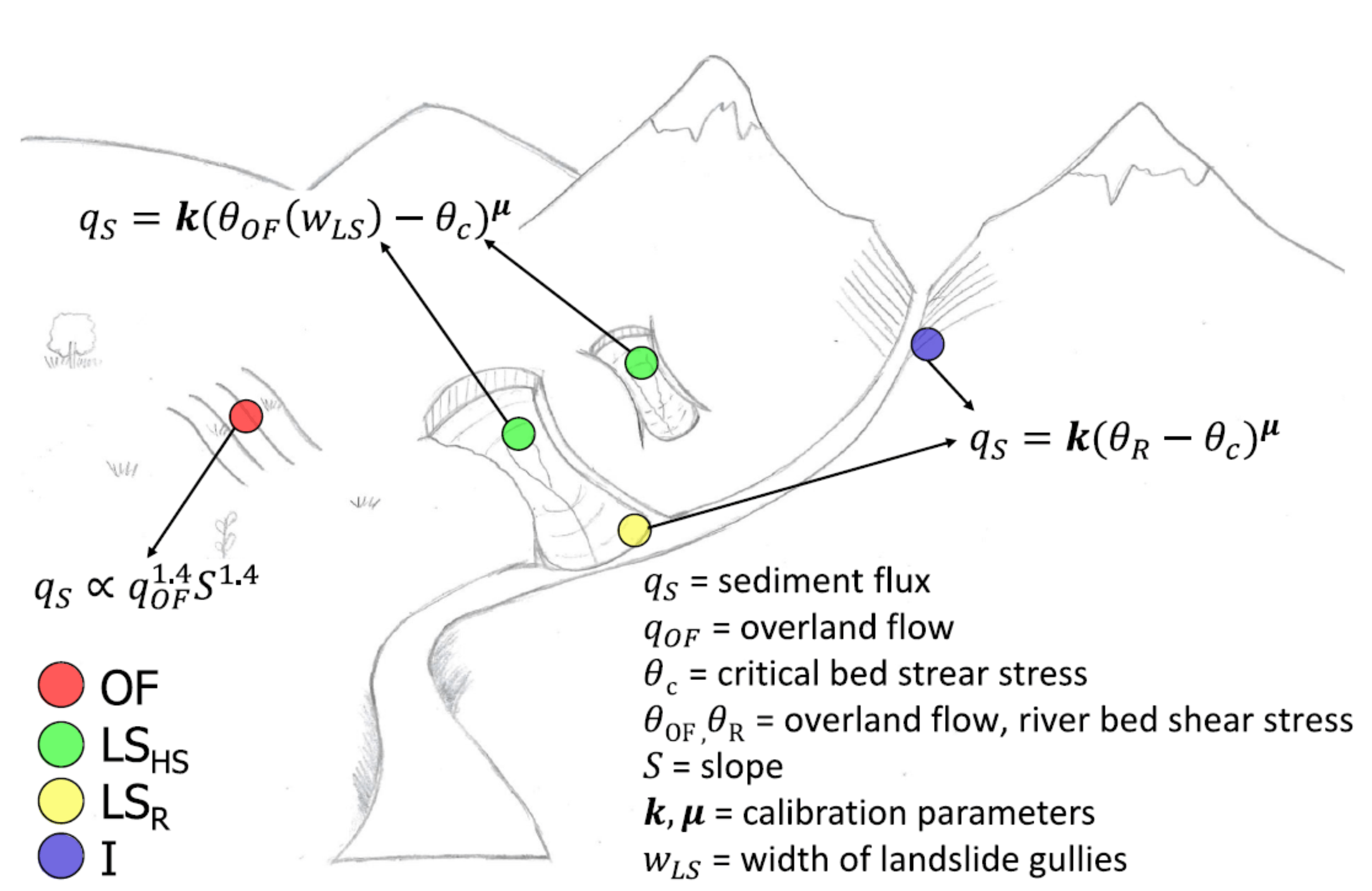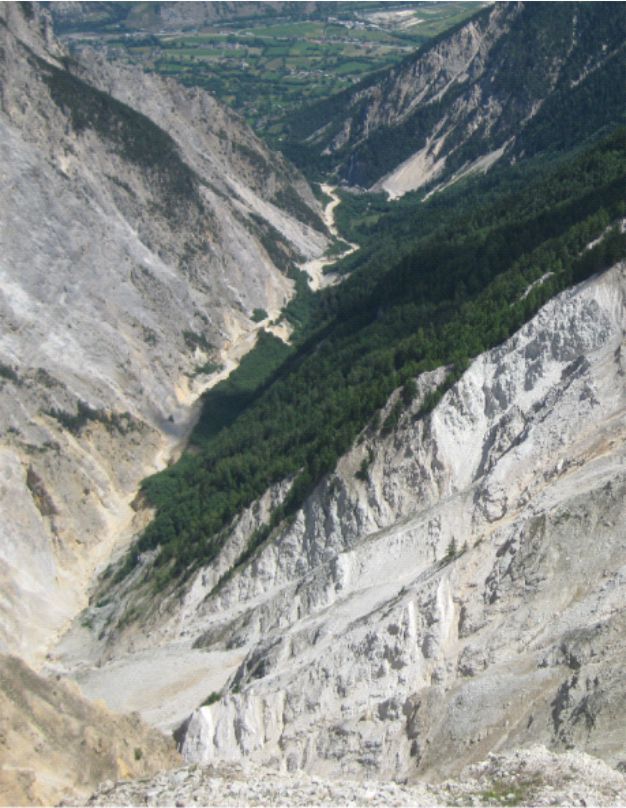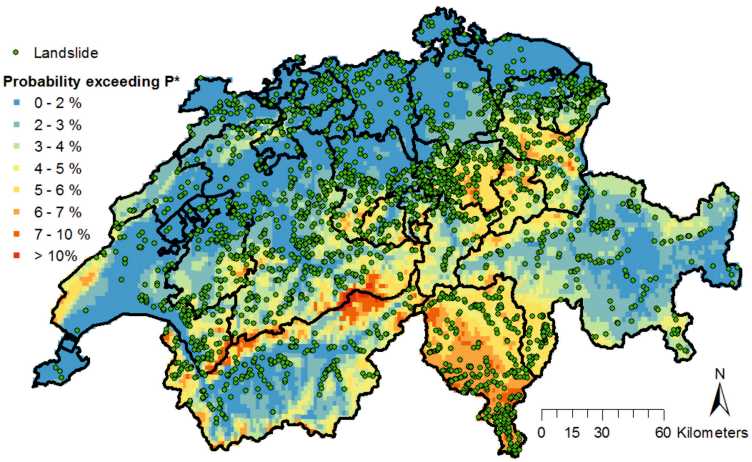Erosion and Natural Hazards
The fluvial system is a collection of connected landscape elements (hillslopes, channels, river network) that evolve in response to climate forcing and land surface conditions to produce dynamic sediment fluxes. In our research on fluvial systems we focus on aspects of the sediment storage-release problem by physically-based and conceptual modelling, and the hydrological triggering of natural hazards that leads to sediment production at catchment scales (e.g. by landslides).
Distributed sediment pathway modelling

Physically-based fully-distributed modelling of land surface processes (hydrology) is required to make accurate predictions of sediment fluxes. We develop numerical tools for this purpose, focussing on the specific problem of identifying and tracking sediment from sources to sinks. With these tools we investigate the effects of climatic driving forces (rainfall and temperature), surface properties (hillslope erodibility), and local sources (landslides) on suspended sediment fluxes. Research is also directed towards using sediment tracing techniques to support model development and validation.
Projects:
S2S
Sediment cascades and sediment budgets

Sediment transfer through a fluvial system can be thought of as a sediment cascade where sediment is gradually stored and released. This may be a sediment cascade between hillslope storages, channel bed, and basin outlet, or sediment storage in the channel bed in step-pool systems and their release by step erosion. In this research we build simple and complex models for such cascades in alpine basins (SedCas) and in step-pool channels (CAST). The focus of the research is on geomorphic processes interpretation of cascade models and scenario analysis, e.g. studying climate change impacts in geomorphic systems (SCAMM).
Hydroclimatic triggering of erosion and landslides

The triggering of sediment producing events like landslides, floods, debris flows, etc., is usually given by a combination of hydroclimatic factors, land surface erodibility, and the availability of sediment. In this reseach we investigate the triggering factors of those sediment sources (e.g. landslides by rainfall, fine sediment production by glaciers, snowmelt, and overland flow). We build data evidence for the role of these triggering factors, and what they mean for climate change and natural hazards. We also develop blueprints for natural hazard warning systems based on these concepts.
Projects:
SEDFATE
Landslide.CH
